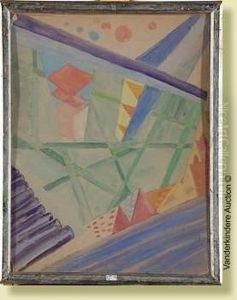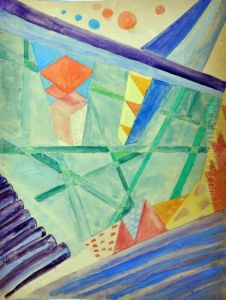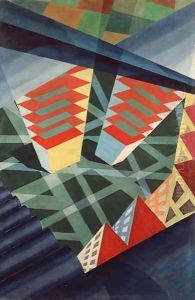Fedele Azari Paintings
Fedele Azari was an Italian Futurist artist, theorist, and poet, less widely known than some of his contemporaries but nonetheless an integral part of the Futurist movement. Born in Brescia in 1895, Azari was involved in the avant-garde cultural scene that was sweeping across Italy in the early 20th century. The Futurist movement, founded by Filippo Tommaso Marinetti in 1909, celebrated modernity, technology, and speed, and sought to revolutionize culture and art in a way that reflected the dynamism of the new century.
Azari's contributions to the movement were multifaceted. In addition to his visual artworks, he wrote theoretical texts and manifestos that explored the intersection of art and the burgeoning technology of his time. He was particularly interested in the aesthetic potential of flight and the airplane, which he saw as symbols of the era's innovative spirit and mechanistic prowess. This fascination led him to focus on 'aeropainting' (aeropittura), a sub-genre of Futurism that sought to capture the experience of flight and the aerial perspective afforded by airplanes.
Azari's work often depicted machines and the experience of speed, featuring dynamic compositions that aimed to evoke the sensation of movement and the excitement of technological progress. His artistic output was not limited to painting; he also explored other media, including theater and poetry. In 1929, he organized the Exhibition of Aerial Art in Brescia, which further solidified his reputation as an advocate for the artistic potential of aviation.
Tragically, Azari's life and career were cut short when he died in a motorboat accident in 1930, at the age of 35. His death was a blow to the Futurist community, which lost in him not only a passionate artist but also an influential thinker who had helped to shape the movement's direction and articulate its response to the technological advancements of the period.


